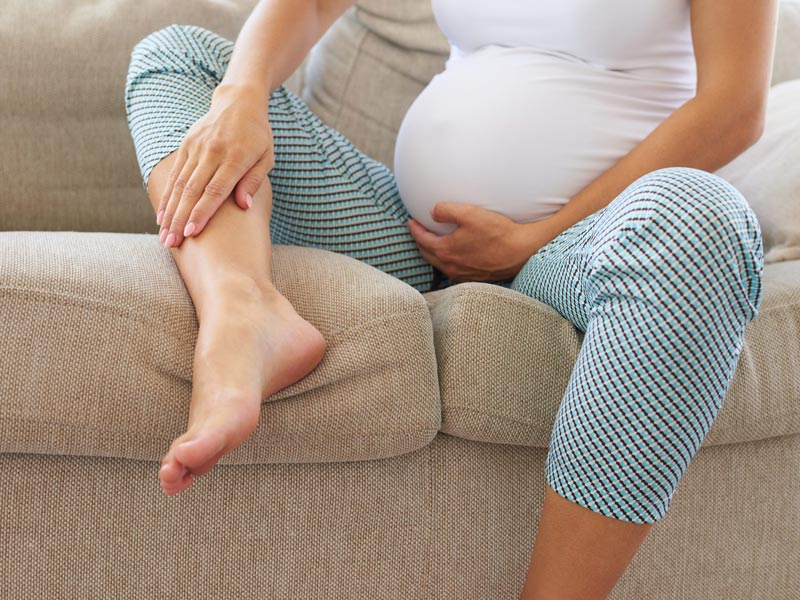
During pregnancy, a woman may encounter various health concerns. One of them being varicose veins. In simple words, varicose veins is a condition that causes swollen, bluish and twisted veins near the surface of the skin. Many women experience this condition of bluish veins usually occurring during the second or third semester of pregnancy. This issue of varicose veins can generally be observed on different body parts such as thighs, legs, around the vulva and in the rectal region. Let us take a deep dive into this article and know what this condition actually is, its symptoms and some simple tips to manage this condition by Dr. Amina Khalid, Obstetrician Gynecologist, MBBS, MD.
Table of Content:-
What are Varicose Veins?
The condition of varicose veins can be simply understood as twisted, enlarged veins that can be caused due to an increased pressure on the lower body. Varicose veins are usually considered to be a harmless part of pregnancy that becomes visible in the second or third trimester of pregnancy. Where this condition might lead to slight itching along with causing some discomfort, but there is no sevre or any long term effect of this condition. These varicose veins can generally be observed in areas such as the legs, thighs, rectal region and around the vulva. Although there is no such way to prevent this condition as it is hereditary, it can surely be tackled and reduced by taking some simple measures.
View this post on Instagram
As our body consists of veins and arteries that help in carrying the oxygenated and deoxygenated blood throughout the body. The deoxygenated blood carrying veins have valves that act as gates of the veins. As the blood flows up, these valves tend to close so that the blood can't flow back. If these valves get loosened up and lose their strength to close properly, it results in the condition of varicose veins.
Why do women get varicose veins during pregnancy?
Like several other changes that a woman’s body goes through, varicose veins are also a result of some of these changes. As many women experience this condition during the later trimesters of their pregnancy, let us go ahead and learn about the reason behind it.
While a woman is pregnant, the increase in blood volume tends to cause some extra load on the heart to pump blood to the body. As this load is comparatively more on the lower half of your body such as on legs and thighs and hence blood needs to be pumped back against the gravity.

Image Credits- Shutterstock
Also Read: Exercises For Varicose Veins: Know Which 3 Exercises Can Fix Those Bulging Veins
Like fluctuation in the levels of other hormones, levels of progesterone also tend to increase during this time. This increased hormonal level causes the muscle veins to relax due to which ineffective venomous blood tends to return.
One of the most obvious reasons for this condition is the increasing pressure due to increase in the weight and size of the baby in the mother's womb. This eventually puts a lot of pressure on the abdomen and causes the valve gates to strain.
Symptoms of varicose veins
Where varicose veins are not a very harmful condition but it can surely result in causing some kind of discomfort. In order to treat this condition one needs to know about its symptoms. Here are some of the common symptoms of varicose veins experienced by most women-
- Dark purple or blue colored veins
- Heaviness in legs
- Itchy sensation in legs
- Skin discoloration
- Swelling in lower legs
- Muscle cramps
- Bulging or twisted veins
Tips to manage this condition
By now we know all about what the condition of varicose veins is, how it is caused, its relationship with pregnancy and some of the common symptoms of this condition. When we are aware about the cause and discomfort of this issue.
Also Read: Yoga During Pregnancy: Expert Shares Tips For Physical & Mental Health
Let’s take a moment to learn various tips and tricks that a woman can follow to manage this condition during pregnancy.
- If you have been standing or sitting down for a while, make sure that you take small breaks in between and move around.
- Practice some light, low impact exercises after consulting your physician.
- Try and wear a maternity support hose as it will help to push the blood upwards to the heart.
- Sleep on your left side to keep off the pressure from the inferior vena cava.
- Stop wearing tight socks or stockings.
- Do not sit with your legs crossed.
- Sleep with a pillow under your legs while lying down.
- Keep your toes and feet moving while sitting for long durations
This article is based upon a post by Dr. Amina Khalid, Obstetrician Gynecologist, MBBS, MD on her instagram handle.
How we keep this article up to date:
We work with experts and keep a close eye on the latest in health and wellness. Whenever there is a new research or helpful information, we update our articles with accurate and useful advice.
Current Version